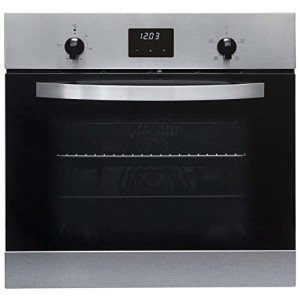The Electric Oven & Hob Success Story You'll Never Believe
Understanding Electric Ovens and Hobs: Your Guide to Cooking Efficiency
Electric ovens and hobs have transformed the cooking landscape, providing home cooks and professional chefs a reputable, effective, and consistent method to prepare meals. As Read More Listed here continue to affect appliance style, the efficiency and performance of electric cooking systems have actually significantly enhanced. This article explores the functions, benefits, and considerations surrounding electric ovens and hobs, supplying a detailed introduction for anybody looking to update or buy kitchen devices.
What Are Electric Ovens and Hobs?
Electric ovens are kitchen devices developed for baking, broiling, roasting, and other cooking approaches that need controlled heat. They make use of electric coils or convected heat elements to create and preserve the wanted temperature level. Electric hobs, typically described as electric cooktops, are flat surfaces with heating aspects that allow pots and pans to be positioned directly on them for cooking.
Table 1: Key Differences Between Electric Ovens and Hobs
Function
Electric Oven
Electric Hob
Primary Function
Baking, roasting, broiling
Heating pots and pans for cooking
Heating Method
Electric coils or glowing components
Induction, glowing, or ceramic aspects
Operation Temperature Range
Up to 500 ° F (260 ° C
) Varies by design; generally lower than ovens
Cooking Styles
Versatile; appropriate for numerous dishes
Primarily stovetop cooking methods
Space Requirement
Normally built into cabinetry
Often standalone or built-in alternatives
Energy Consumption
Typically higher, depending upon use
More energy-efficient with induction hobs
Benefits of Electric Ovens and Hobs
When thinking about electric ovens and hobs, it's important to understand their many advantages, which can enhance the cooking experience.
1. Consistent Heating
Electric ovens and hobs provide even and constant heating, which is vital for lots of cooking methods. This guarantees that meals prepare evenly, reducing the opportunities of overcooking or undercooking particular locations of food.
2. Safety Features
Modern electric ovens and hobs come equipped with numerous safety functions to avoid accidents in the kitchen. For example, lots of models consist of automatic shut-off functions, hot surface indications, and child safety locks.
3. Easy to Use
Unlike gas designs, electric ovens and hobs are uncomplicated and easy to use. The simpleness of turning on a dial or pressing a button makes them accessible for cooks of all ability levels.
4. Versatile Cooking Options
With numerous cooking approaches possible, from baking to simmering, electric models are versatile adequate to accommodate a wide range of cooking designs and preferences.
5. Cleaning and Maintenance
Electric ovens typically include smooth surface areas that are simple to tidy, particularly designs with self-cleaning capabilities. Hobs, specifically induction types, also provide a flat surface area that is easy to clean down, making maintenance a breeze.
Popular Types of Electric Ovens:
- Conventional Ovens: Ideal for conventional baking and roasting.
- Convection Ovens: Circulate hot air for much faster, even cooking.
- Microwave Ovens: Use electro-magnetic radiation for quick heating and cooking.
- Toaster: Small counter top ovens for quick tasks.
Popular Types of Electric Hobs:
- Induction Hobs: Utilize magnetic fields for rapid heating and energy performance.
- Radiant Hobs: Feature electric coils that warm up to prepare food.
- Ceramic Hobs: Offer a smooth surface and are simple to tidy.
Considerations When Choosing Electric Ovens and Hobs
While electric ovens and hobs provide various advantages, a number of elements must be considered to guarantee the ideal fit for your kitchen:
1. Area Availability
Examine the readily available kitchen area before buying. Identify whether you require a built-in design or a freestanding appliance, and determine the dimensions thoroughly to ensure a good fit.
2. Cooking Needs
Determine your cooking practices and choices. If you routinely bake big quantities or cook complex meals, consider an oven with advanced features like convection settings or multiple racks.
3. Energy Efficiency
Try to find energy-efficient designs that can assist in saving on energy costs in time. Energy Star-rated appliances can be especially affordable.
4. Spending plan
Set a sensible spending plan that accounts for both the initial purchase and continuous operating costs. In addition to the home appliance cost, element in setup and potential repair work.
5. Extra Features
Think about whether functions like wise technology, programmable settings, or steam cooking alternatives are essential for your cooking design.
FAQ Section
Q: How do I tidy my electric oven?
A: Most electric ovens featured self-cleaning alternatives. If your design does not have this function, enable the oven to cool, then clean down surface areas with a mixture of baking soda and water or a business oven cleaner.
Q: Is induction cooking safe?
A: Yes, induction cooking is thought about safe as the heating element only activates when suitable cookware is in contact with it, minimizing the risk of burns.
Q: How long does it consider an electric oven to preheat?
A: Preheating times differ based upon the oven's model and temperature setting however typically vary from 10 to 15 minutes.
Q: Can I use any pots and pans on an induction hob?
A: No, only ferromagnetic cookware works with induction hobs. Look for induction compatibility before usage to avoid damage.
Q: What is the difference in between a stove and a traditional electric oven?
A: A convection oven includes a fan that distributes hot air, making sure even cooking and reduced cooking times compared to a standard electric oven, which does not have this feature.
Electric ovens and hobs offer a modern option to numerous cooking needs, offering performance and dependability in the kitchen. As consumers evaluate their options, understanding the features, types, and considerations will allow them to make informed decisions. Whether one is an occasional cook or a culinary lover, electric home appliances can improve the overall cooking experience, bringing benefit and creativity to the table.
